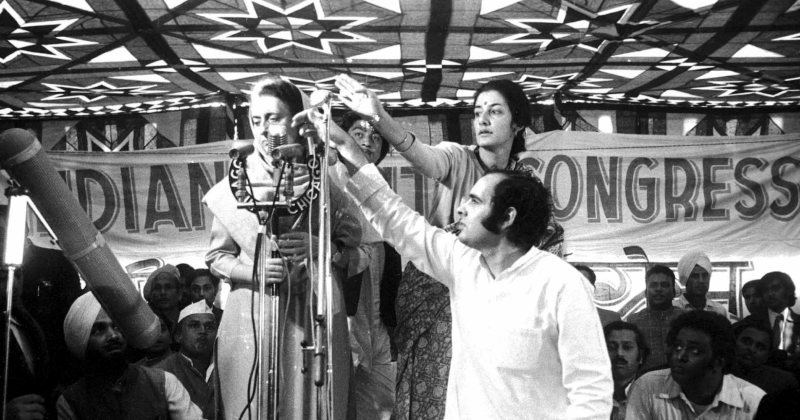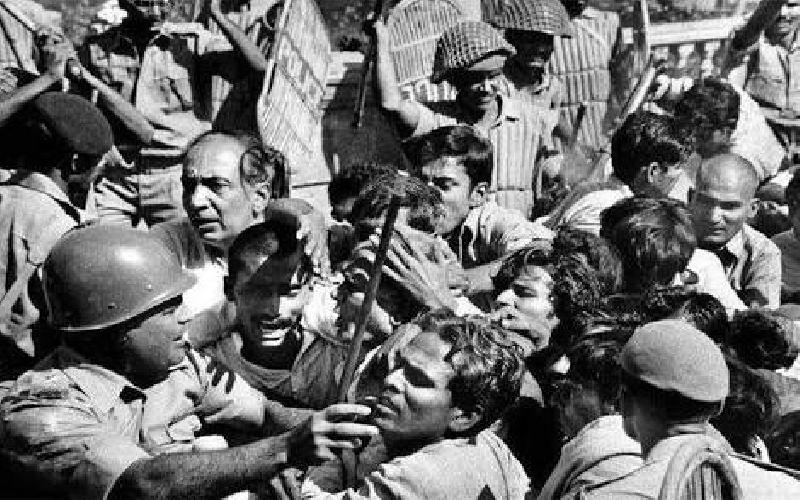Feature
Lesser known facts about the 1975 Emergency which you must not have heard of

It has been 43 years ago on this day that then prime minister Indira Gandhi had declared a state of national Emergency in India. The order was imposed for 21-month period where constitutional rights and freedom of the masses were suspended.
India saw its darkest phase since Independence when then Prime Minister Indira Gandhi called for an emergency to be declared across the country. Arguably the toughest time for the citizens of the country, the emergency was issued by President Fakhruddin Ali Ahmed under Article 352(1) of the Constitution. They termed it as “internal disturbance” that lasted 21 long months beginning 25th June 1975 and going on until 21st March 1977. Here are some facts and pictures from the emergency period.

Here are some facts about it which you would have never known before.
1.This was India’s 3rd emergency since its Independence which tells us how unstable political conditions were.
2.Strikes and protests everywhere and the rise of a political opposition were responsible for the economic tumble.
3.Many familiar faces in today’s political arena first spring boarded their career on the Emergency. Before becoming the Chief Minister of Bihar, Lalu Prasad Yadav was a 26-year-old student leader. It was Lalu Prasad who persuaded the Gandhian leader Jay Prakash Narayan to come out of retirement and lead the country to bring about “total revolution” against the government of the time.

4.Atal Bihari Vajpayee also had a key role to play at the end of the Emergency. He was instrumental in the formation of the Jana Sangh — A united opposition against the ruling Congress that clinched the 1977 elections after the Emergency was lifted. Vajpayee became the country’s Minister of External Affairs at the time, before becoming the country’s Prime Minister decades later.
5.Censorship played a huge role. It was imposed on the press, cinema and other forms of art, and political leaders were being arrested at the whim and fancy of the government.
6. The Nav Nirman movement in Gujarat led by students and middle-class people against corruption.

7 Student agitation by Bihar Chatra Sangharsh Samiti, which was led by the socialist Jayprakash Narain (popularly known as JP), who also declared “total revolution”, asking students and public at large, to non-violently protest everyday.
8 The nationwide strike of the railway-employees union, the largest union in India. The strike had to face brutal suppression by the government, with thousands of employees and their families being driven out of their quarters.
9.All the fundamental rights of the citizens were cut back.

Arrests were made without framing any charges.
10. Media was censored.
11. Narendra Modi posed as Sikh during emergency to avoid arrest.
12.The opposition leaders were tortured, arrested, or detained. Some of the many notable leaders from the opposition to have faced the major wrath were Jayprakash Narain, Morarji Desai, Charan Singh, Atal Bihari Vajpayee, Lal Krishna Avani, Raj Narain and Jivatram Kripalni.
Entertainment
Meghalaya Reserves Legalized Gambling and Sports Betting for Tourists

The State Scores Extra High on Gaming-Friendly Industry Index
Meghalaya scored 92.85 out of 100 possible points in a Gaming Industry Index and proved to be India’s most gaming-friendly state following its recent profound legislation changes over the field allowing land-based and online gaming, including games of chance, under a licensing regime.
The index by the UK India Business Council (UKIBC) uses a scale of 0 to 100 to measure the level of legalisation on gambling and betting achieved by a state based on the scores over a set of seven different games – lottery, horse racing, betting on sports, poker, rummy, casino and fantasy sports
Starting from February last year, Meghalaya became the third state in India’s northeast to legalise gambling and betting after Sikkim and Nagaland. After consultations with the UKIBC, the state proceeded with the adoption of the Meghalaya Regulation of Gaming Act, 2021 and the nullification of the Meghalaya Prevention of Gambling Act, 1970. Subsequently in December, the Meghalaya Regulation of Gaming Rules, 2021 were notified and came into force.
All for the Tourists
The move to legalise and license various forms of offline and online betting and gambling in Meghalaya is aimed at boosting tourism and creating jobs, and altogether raising taxation revenues for the northeastern state. At the same time, the opportunities to bet and gamble legally will be reserved only for tourists and visitors.
“We came out with a Gaming Act and subsequently framed the Regulation of Gaming Rules, 2021. The government will accordingly issue licenses to operate games of skill and chance, both online and offline,” said James P. K. Sangma, Meghalaya State Law and Taxation Minister speaking in the capital city of Shillong. “But the legalized gambling and gaming will only be for tourists and not residents of Meghalaya,” he continued.
To be allowed to play, tourists and people visiting the state for work or business purposes will have to prove their non-resident status by presenting appropriate documents, in a process similar to a bank KYC (Know Your Customer) procedure.
Meghalaya Reaches Out to a Vast Market
With 140 millions of people in India estimated to bet regularly on sports, and a total of 370 million desi bettors around prominent sporting events, as per data from one of the latest reports by Esse N Videri, Meghalaya is set to reach out and take a piece of a vast market.
Estimates on the financial value of India’s sports betting market, combined across all types of offline channels and online sports and cricket predictions and betting platforms, speak about amounts between $130 and $150 billion (roughly between ₹9.7 and ₹11.5 lakh crore).
Andhra Pradesh, Telangana and Delhi are shown to deliver the highest number of bettors and Meghalaya can count on substantial tourists flow from their betting circles. The sports betting communities of Karnataka, Maharashtra, Uttar Pradesh and Haryana are also not to be underestimated.
Among the sports, cricket is most popular, registering 68 percent of the total bet count analyzed by Esse N Videri. Football takes second position with 11 percent of the bets, followed by betting on FIFA at 7 percent and on eCricket at 5 percent. The last position in the Top 5 of popular sports for betting in India is taken by tennis with 3 percent of the bet count.
Local Citizens will Still have Their Teer Betting
Meghalaya residents will still be permitted to participate in teer betting over arrow-shooting results. Teer is a traditional method of gambling, somewhat similar to a lottery draw, and held under the rules of the Meghalaya Regulation of the Game of Arrow Shooting and the Sale of Teer Tickets Act, 2018.
Teer includes bettors wagering on the number of arrows that reach the target which is placed about 50 meters away from a team of 20 archers positioned in a semicircle.
The archers shoot volleys of arrows at the target for ten minutes, and players place their bets choosing a number between 0 and 99 trying to guess the last two digits of the number of arrows that successfully pierce the target.
If, for example, the number of hits is 256, anyone who has bet on 56 wins an amount eight times bigger than their wager.











